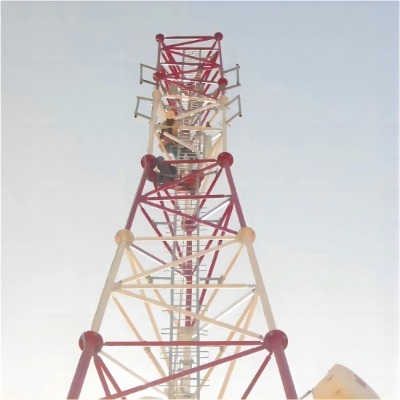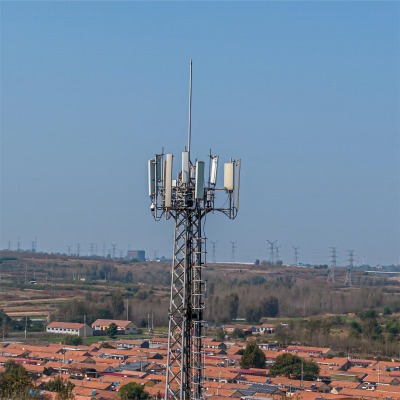A tubular telecom tower is a type of structure commonly used to support antennas and telecommunication equipment. These towers are characterized by their tubular or cylindrical shape, which provides strength and stability for mounting various telecom components. Here is an overview of a tubular telecom tower:

Design and Features:
- Tubular Structure: Tubular towers are constructed using cylindrical steel sections that are welded or bolted together to form a continuous tube.
- Materials: Typically made of steel for its strength, durability, and resistance to environmental conditions.
- Height: Tubular towers can vary in height, ranging from tens to hundreds of feet, depending on the specific requirements of the telecommunication network.
- Design Variations: Tubular towers can have different designs, including monopoles with a single tube or lattice designs with multiple tubular sections.
- Platforms: Feature platforms at different heights for mounting antennas, transmitters, and other telecom equipment.
- Foundation: Requires a robust foundation to anchor the tower securely to the ground and provide stability.
Applications:
- Telecommunication: Used to support antennas for various wireless communication technologies, including cellular networks, radio, and television broadcasting.
- Urban Areas: Commonly deployed in urban and suburban areas where space constraints or aesthetic considerations make tubular towers a suitable choice.
- Co-location: Tubular towers can accommodate multiple tenants, allowing different wireless carriers to share the same tower structure.
- Customization: Tubular towers can be customized with additional features, such as equipment shelters and lightning protection systems.

Advantages:
- Space Efficiency: Tubular towers require less ground space compared to lattice towers, making them suitable for sites with limited area.
- Aesthetics: Tubular towers are often considered more visually appealing and less obtrusive than traditional lattice towers, making them suitable for urban and suburban environments.
- Strength and Durability: The tubular design provides structural strength and rigidity, making these towers capable of withstanding various environmental conditions.
- Quick Installation: Tubular towers are relatively quick and easy to install, reducing construction time and disruption.
Installation Process:
- Site Preparation: Survey the site, clear the area, and prepare the foundation for the tubular tower.
- Tower Assembly: Erect the tubular sections and secure them together to form the complete tower structure.
- Antenna Installation: Mount antennas, transmitters, and other telecom equipment on the tower platforms at different heights.
- Testing and Commissioning: Conduct testing to ensure proper installation and functionality of the tower and associated equipment.
Tubular telecom towers offer a practical and aesthetically pleasing solution for supporting antennas and telecom equipment in various environments. Proper design, installation, and maintenance are essential to ensure the structural integrity and optimal performance of tubular towers for telecommunications operations.
Learn more at www.alttower.com
